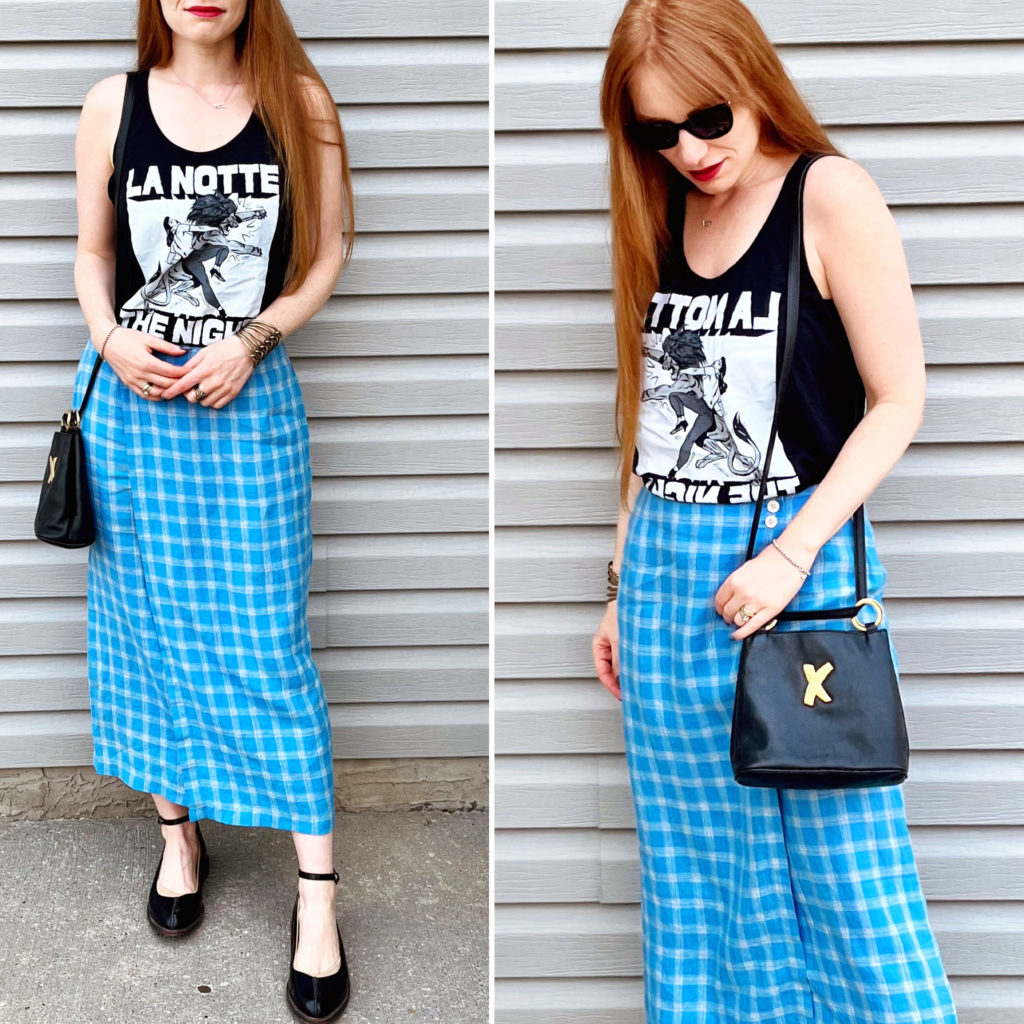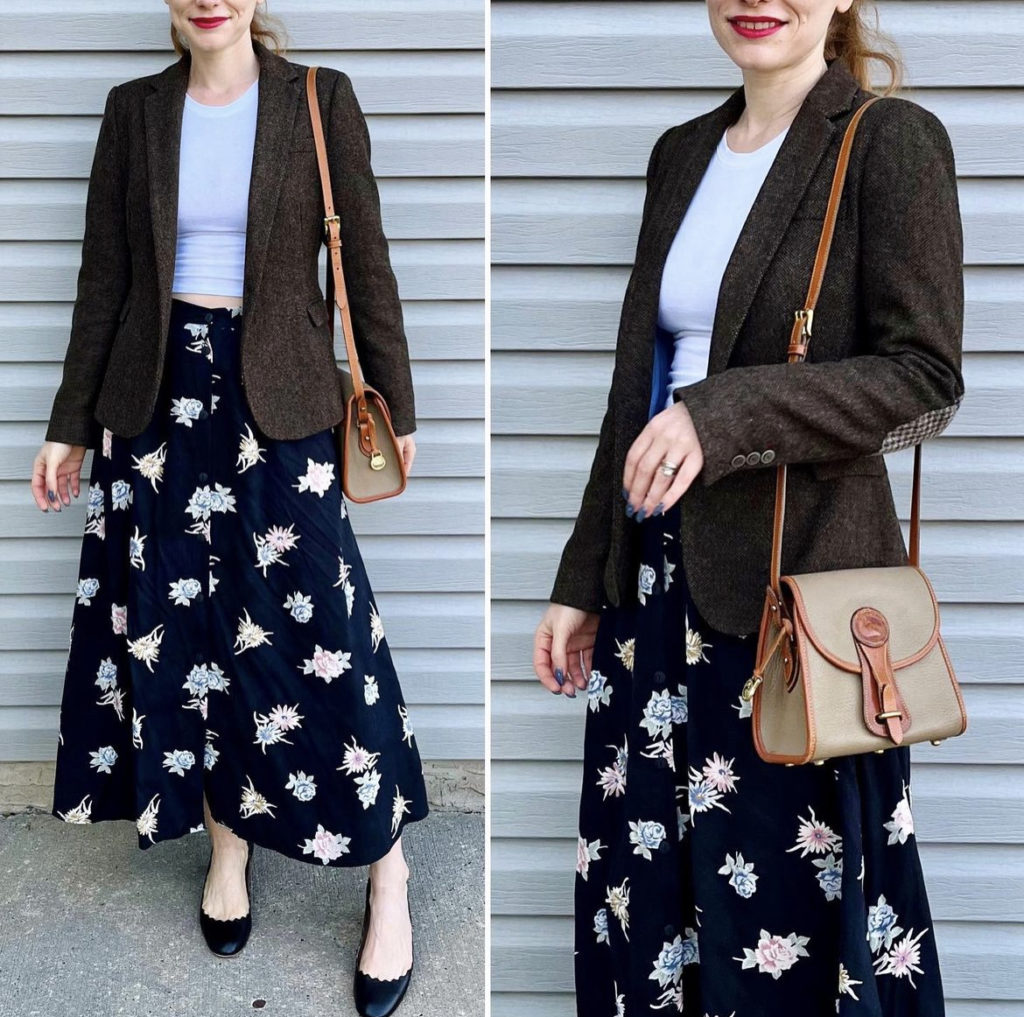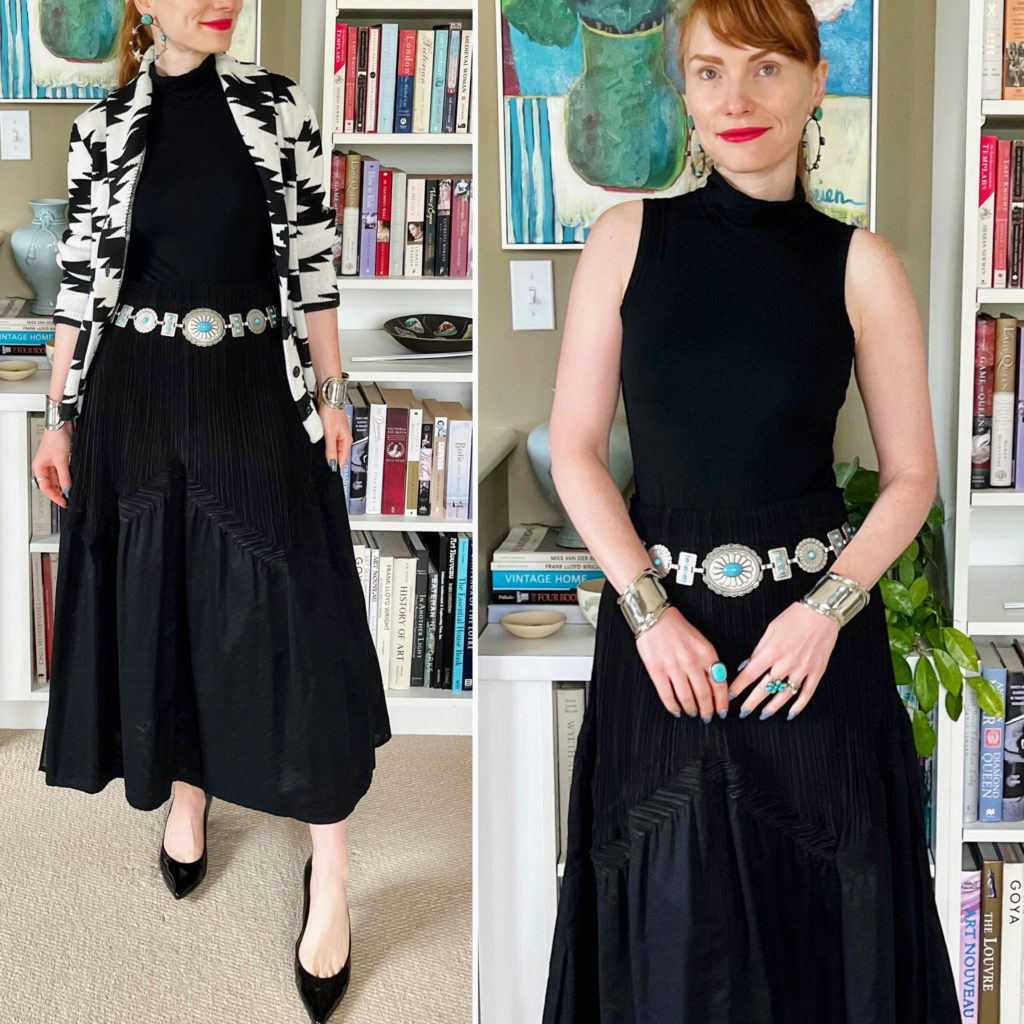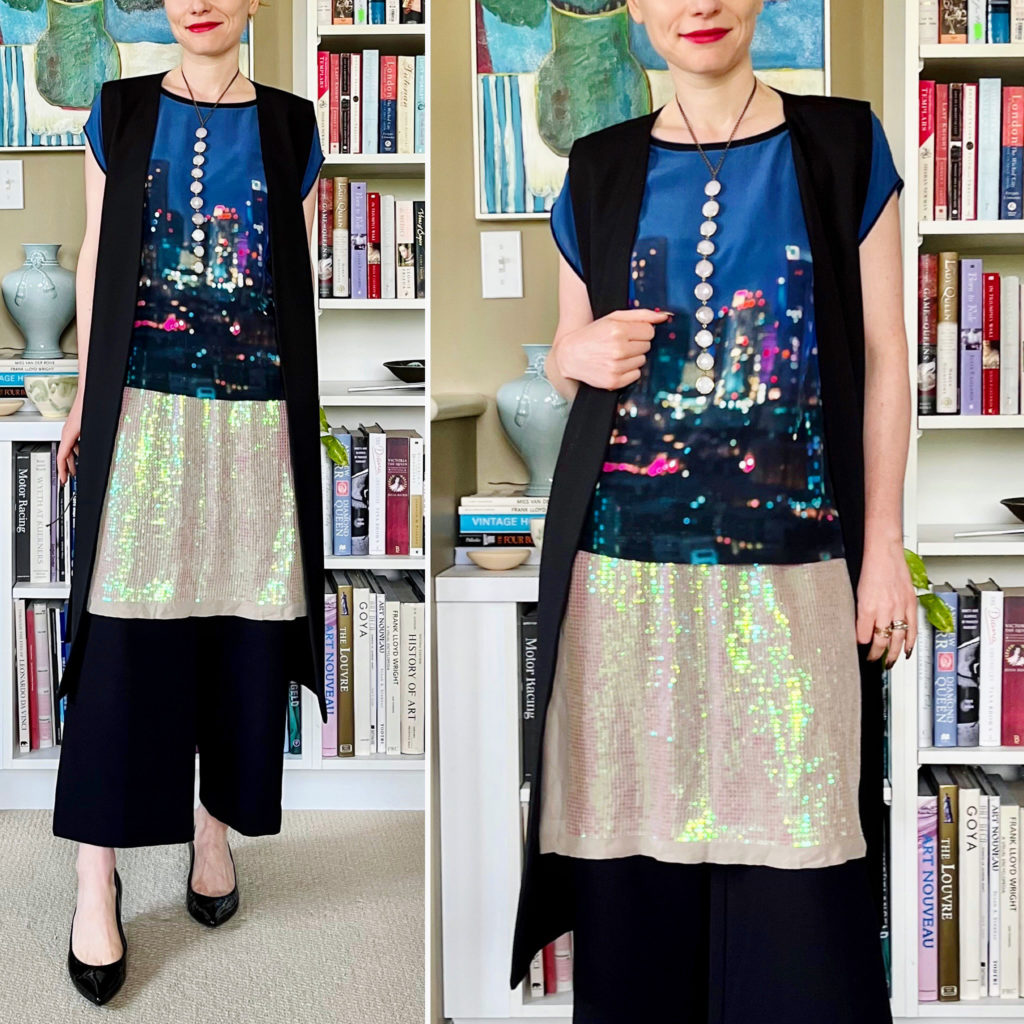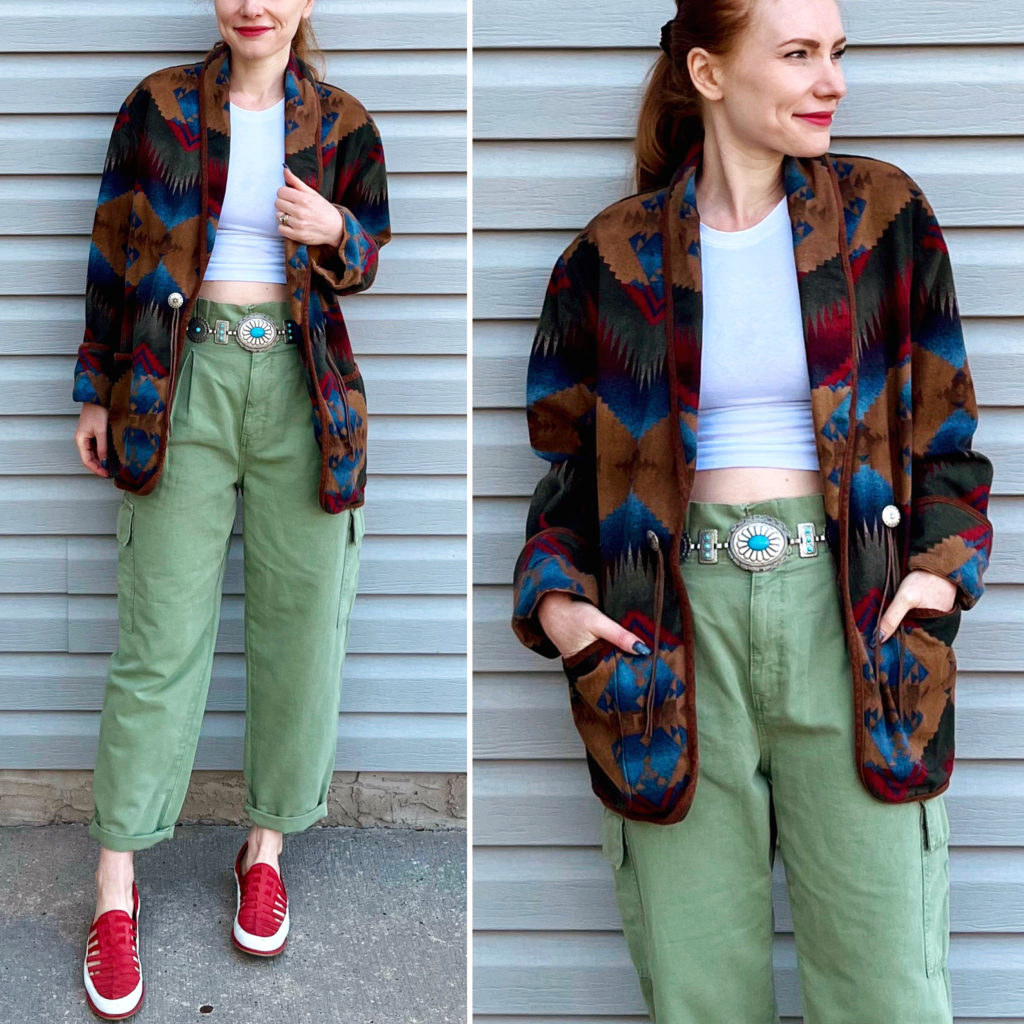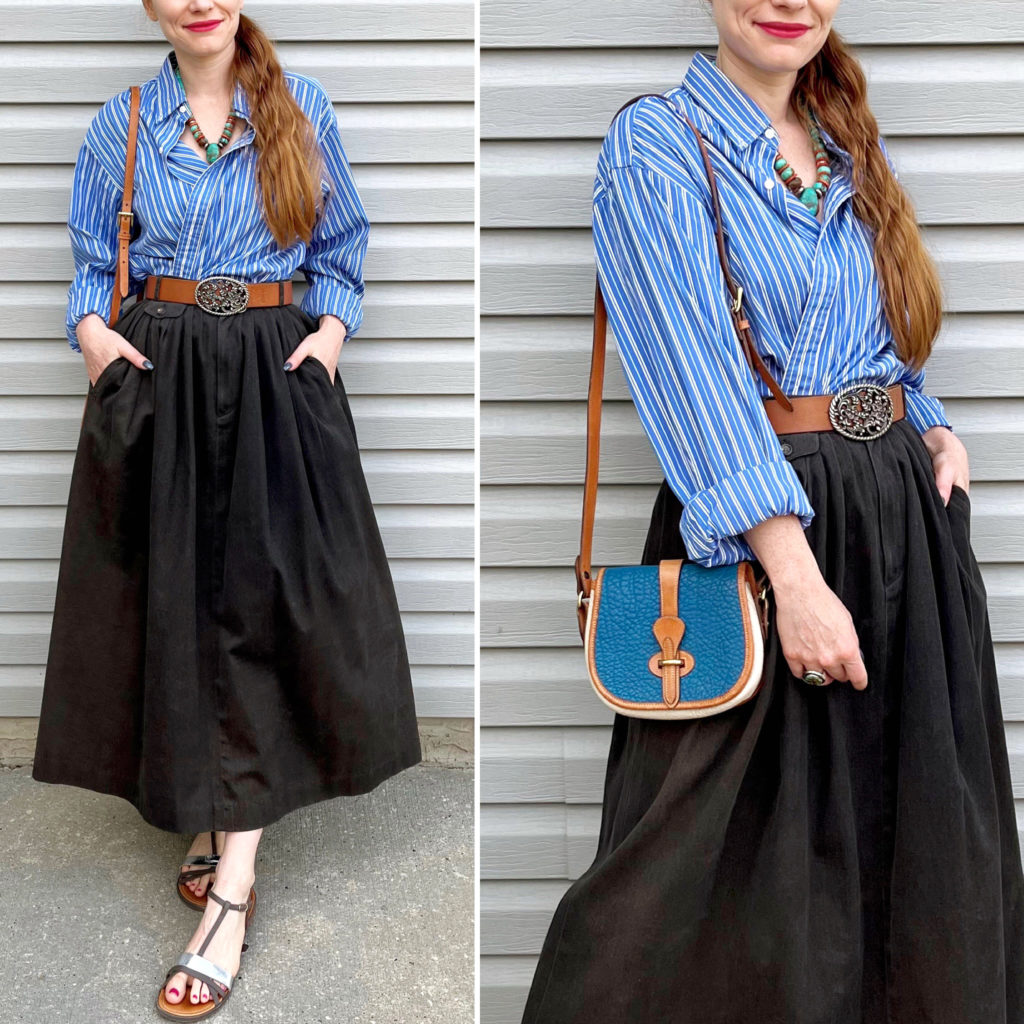This post is about … exactly what the title says. With summer (almost) officially over, it’s a good time to look back and assess what outfits struck a chord. You can see patterns — for successful outfit formulas, colour combinations, etc. — and use the information to refine sartorial strategies. I can talk all I want about theoretical concepts like avatars or about aspirational style inspo, but the proof is in the pudding. What do I like to wear?
A quick glance at my Instagram main page suggests my personal aesthetic is all over the place. Colours, proportions, vibes … all just a mad jumble. I used to get very discouraged by this apparent inconsistency, before I landed on the avatar concept which, essentially, embraces the fact that my style has radically different facets (i.e. different personalities). When you drill down, patterns or throughlines do emerge. For summer 2023, I identified 7 “themes”. If I want to super reductive, each theme can be assigned to an avatar — more on that below — but the reality is that outfit-avatar alignment is not an exact thing, and lots of outfits fall on the periphery of the avatar “identity”.
Theme 1: Colour Maximalism
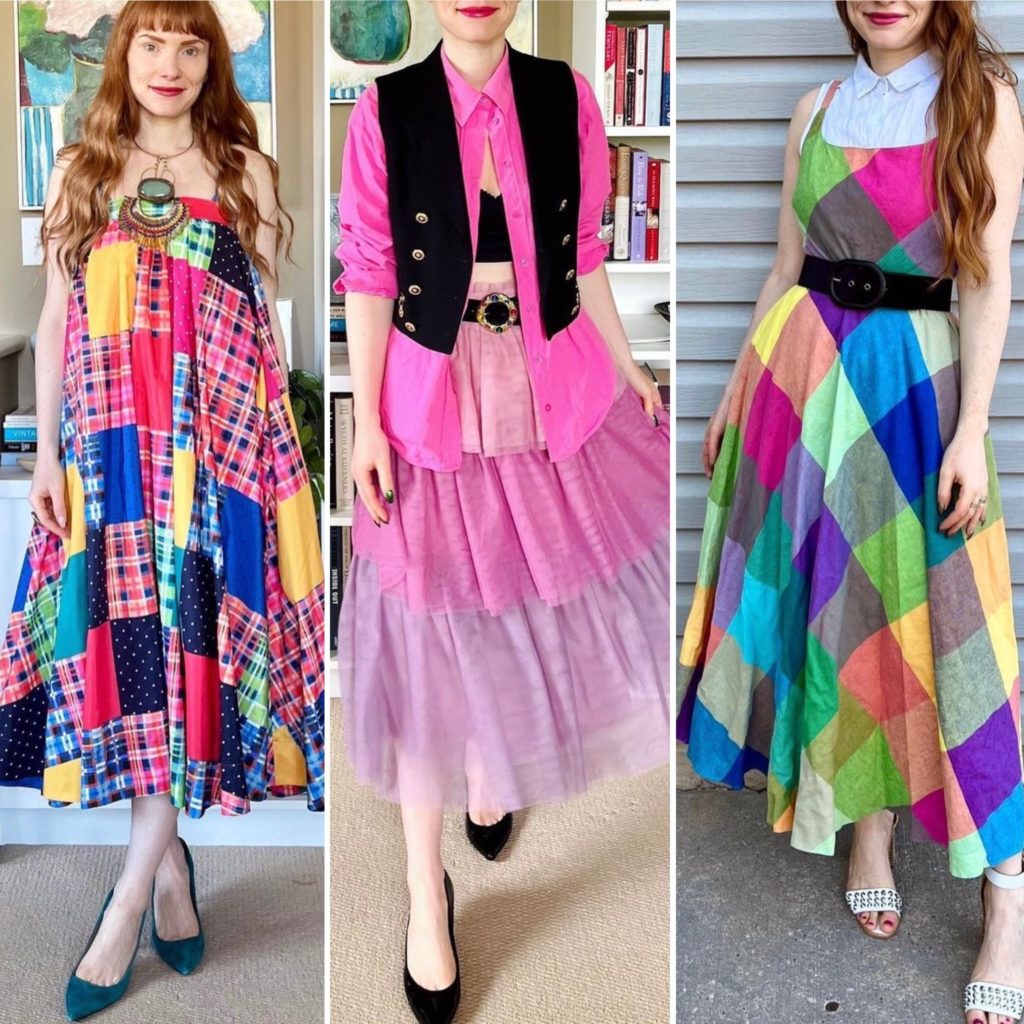
This “theme” has been a constant one since 2020. In the past, it was strongly aligned with the Bohemian avatar, but as the vibe of that avatar has changed, this association has become looser. If the Bohemian vibe this summer was a prairie-romantic one, the outfits above don’t really fit the bill. But in terms of silhouette and ethos, they are still very much “me”. Note the layering in the 2 outfits on the right; the play with proportions; the length of the hemlines. All very Adina.
Theme 2: Boho Prairie
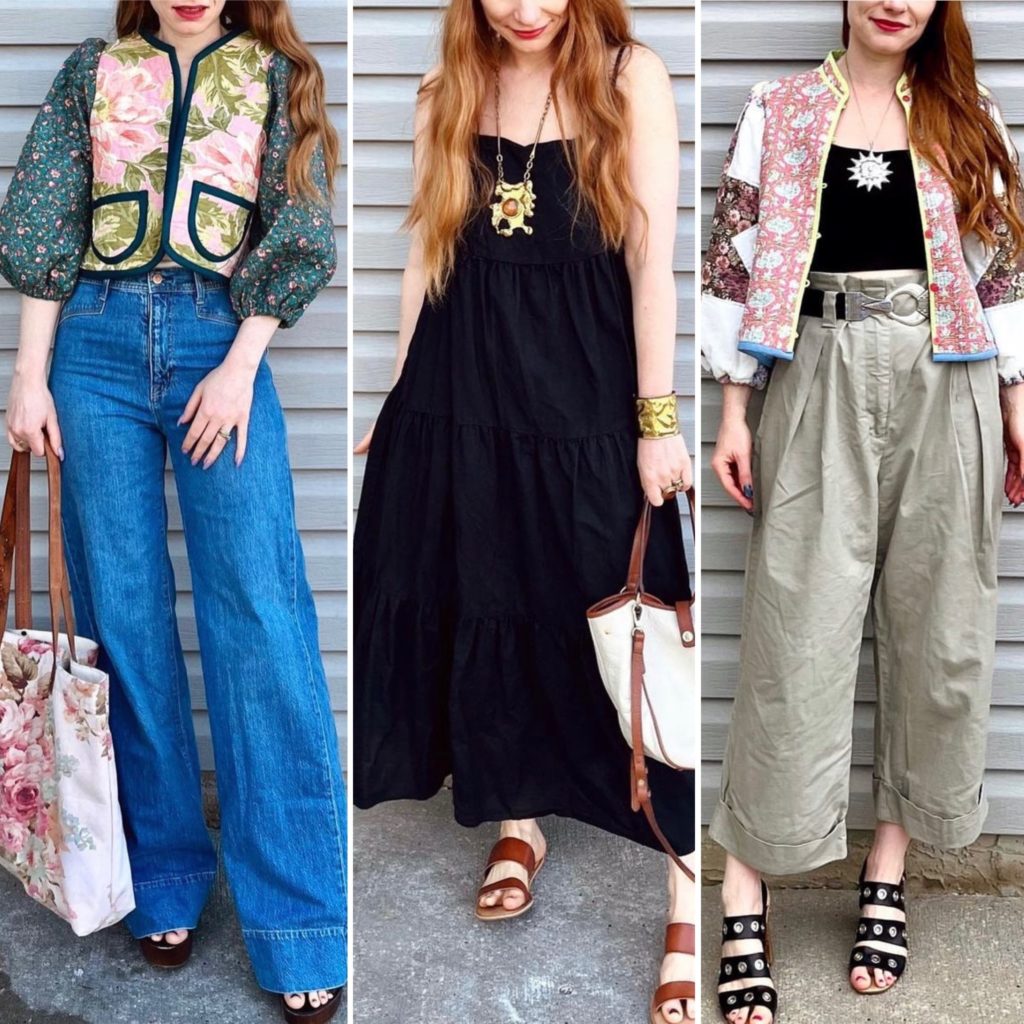
This theme aligns well with the Bohemian avatar, and not just because of the name. It’s a little bit 70s, a little bit arts-and-crafts, a little bit eclectic. Wide leg pants, voluminous (maxi) dresses, funky/organic jewelry, and everything patchwork. The pants silhouette and dress length is something that will carry through into fall and winter, although the plan is to set aside patchwork in favour of plaid, and go with slightly more streamlined dresses. The vibe will also be darker and a bit more goth than folk, if that makes sense.
Theme 3: Romantic Southwest
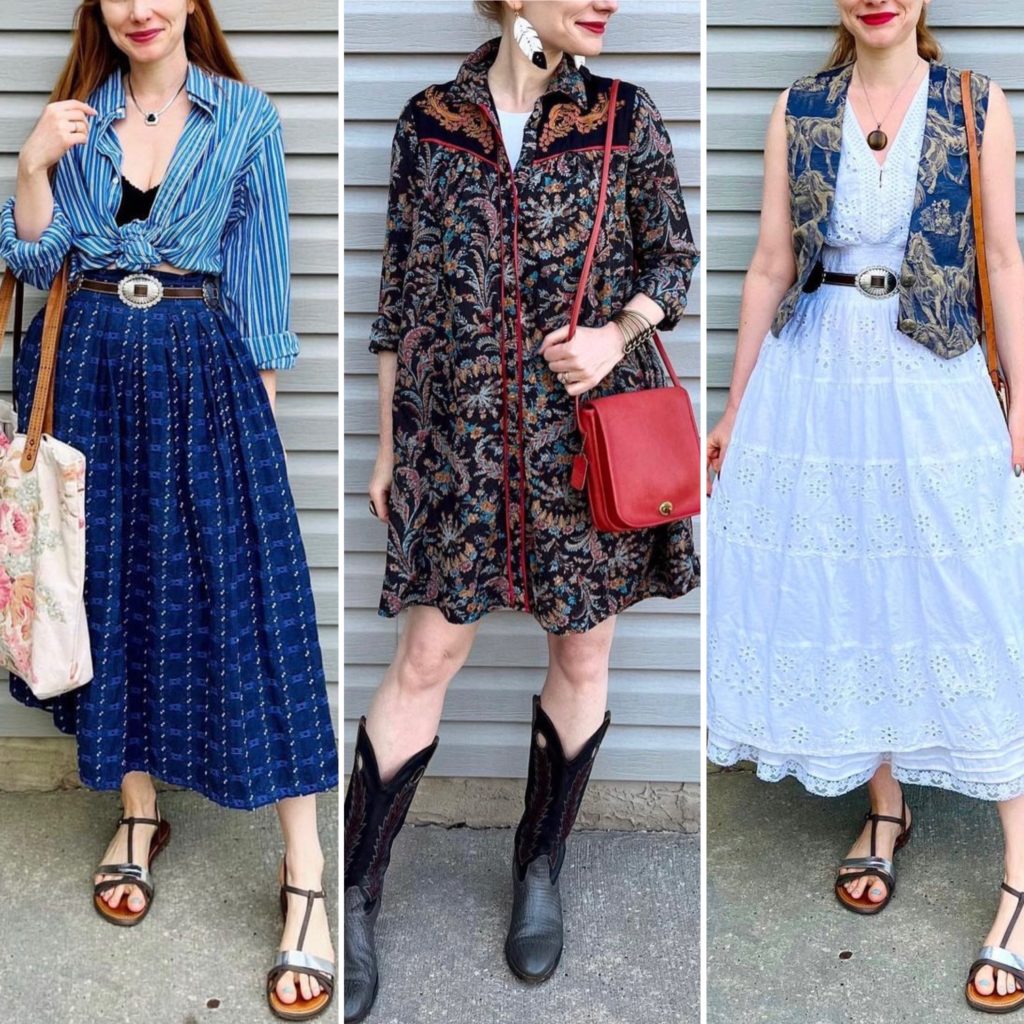
This also aligns with the Bohemian avatar, and is obviously deeply influenced by my obsession with Ralph Lauren. My goal lately has been to incorporate southwest elements into outfits without going “full cowgirl”. Usually, that means using one (or at most, two) southwest element so it doesn’t overwhelm the outfit. Again, you see that skirts and dresses are my go-tos, usually with long hemlines (though the addition of cowboy boots to my wardrobe is changing things a little bit) — I call that the “romantic” element.
Theme 4: Preppy
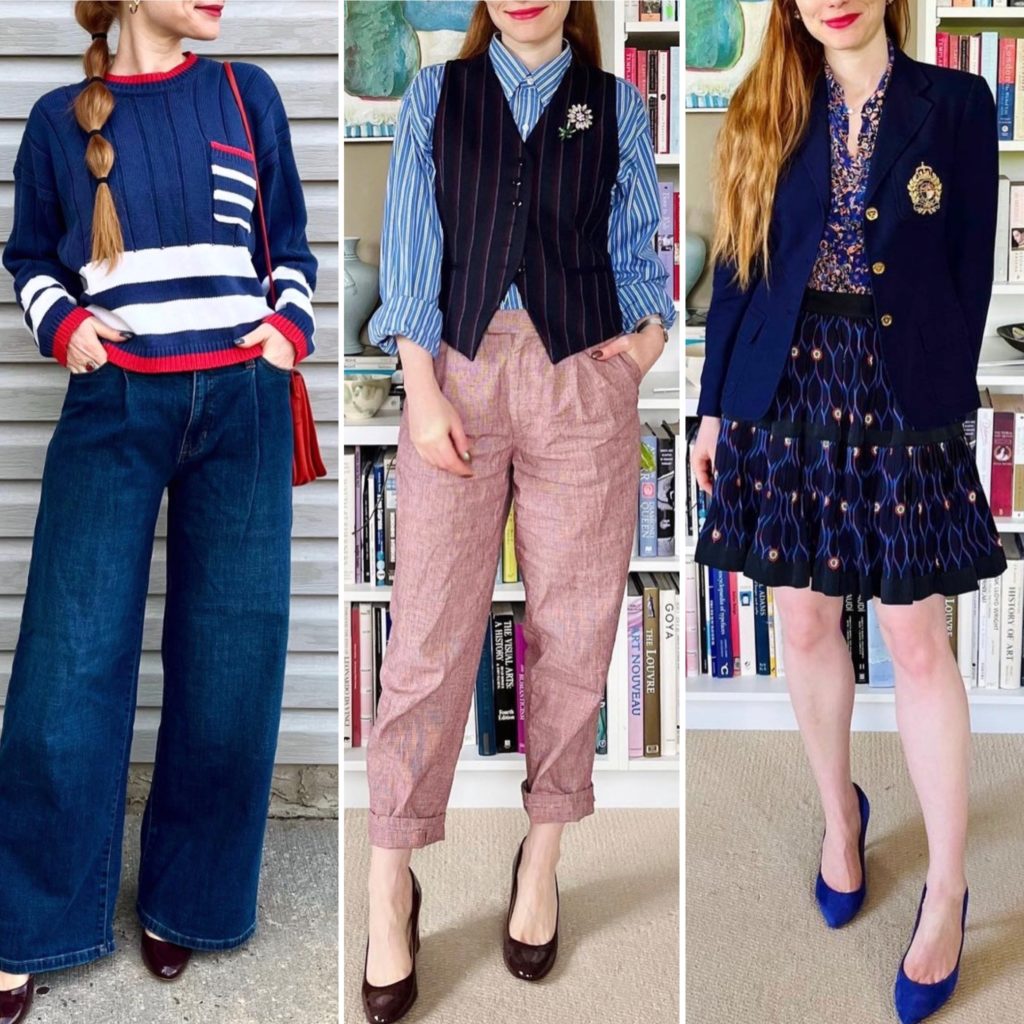
I hate the word “preppy” but I am using it here as a catch-all for convenience. This theme aligns with my Historian avatar. Some of the elements that I plan to carry into fall include vests, men’s shirts, “preppy” blazers, fisherman-type sweaters, and short skirts (with tights). As you may have noticed, I don’t wear short skirts a lot; the main exception is academichic-type outfits (like the outfit on the right, above). I think I will also explore a second exception this fall, in the context of my 90s revival obsession — see more below.
Theme 5: Black and White
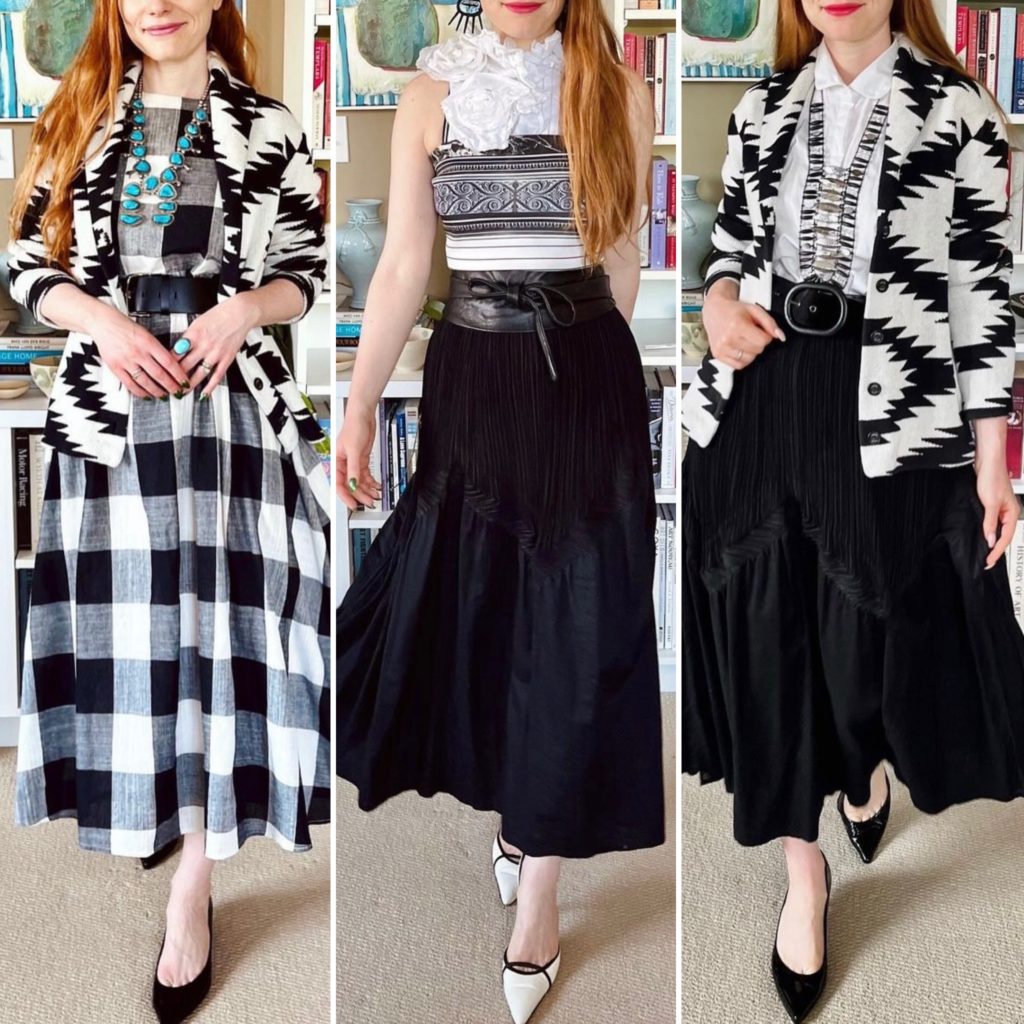
This has been a theme in my outfits for the past year, and it’s not aligned with any specific Avatar. For example, of the outfits above, the ones on the left and right are Bohemian fits; the one in the middle might be best described as an older version of the Artist (pre Fall 2023). There is no real rhyme and reason to my black and white outfits, other than my delight in, well, wearing black and white as a high contrast, hyper graphic combination.
Theme 6: Monochromatic Minimalism
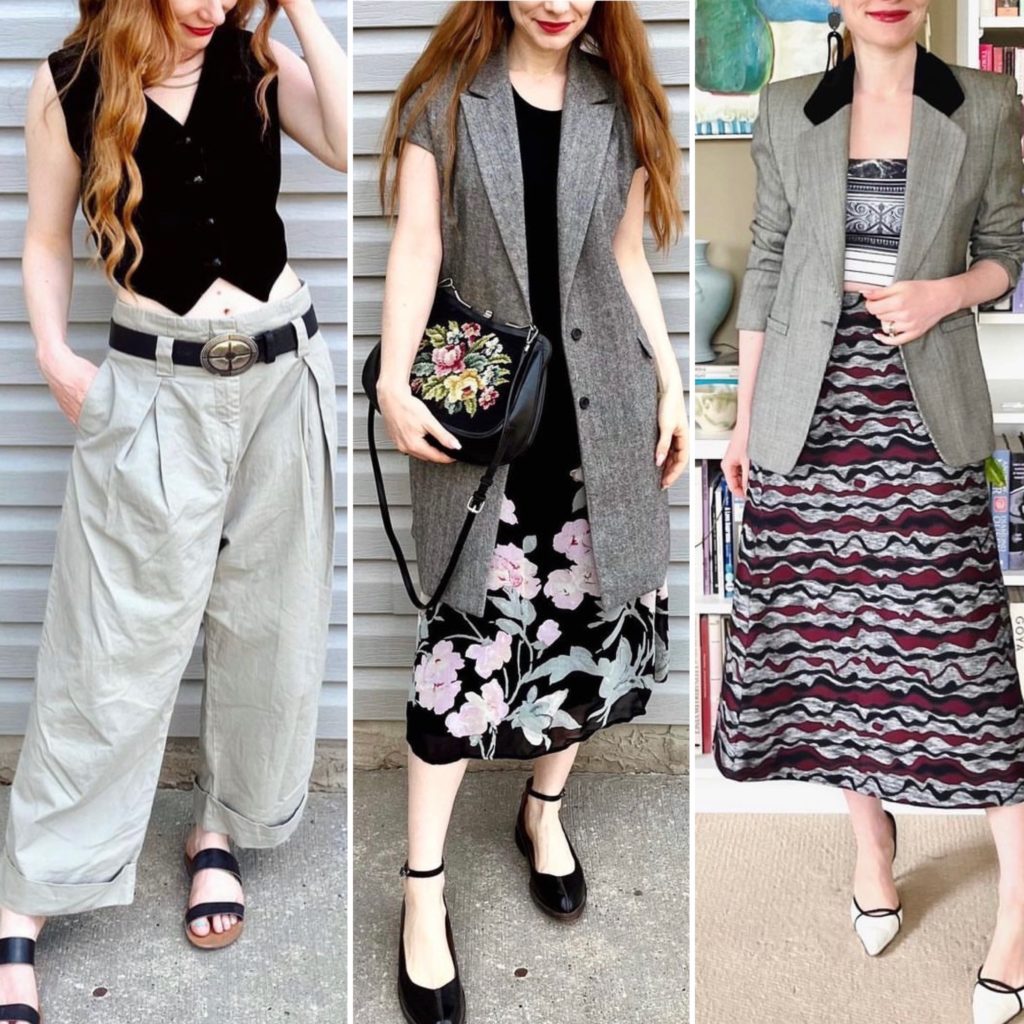
Not to be confused with the previous theme, this is a softer approach to monochromatism — a limited palette of neutrals, rather than stark black and white. A better name for it might be “minimalist neutrals” but for some reason, I don’t think that captures this vibe as well. This theme is difficult for other reasons too. I think the outfits above clearly share a certain amount of DNA, but they don’t readily align with any avatars. I detect a subtle 90s flavour that is coming through with these outfits, though, so I am going to put them down as the early prototypes (or fringe examples) of my updated Artist vibe. The key notes here are the toned-down colour palette and relative minimalism of the outfit elements.
Theme 7: 90s Revival
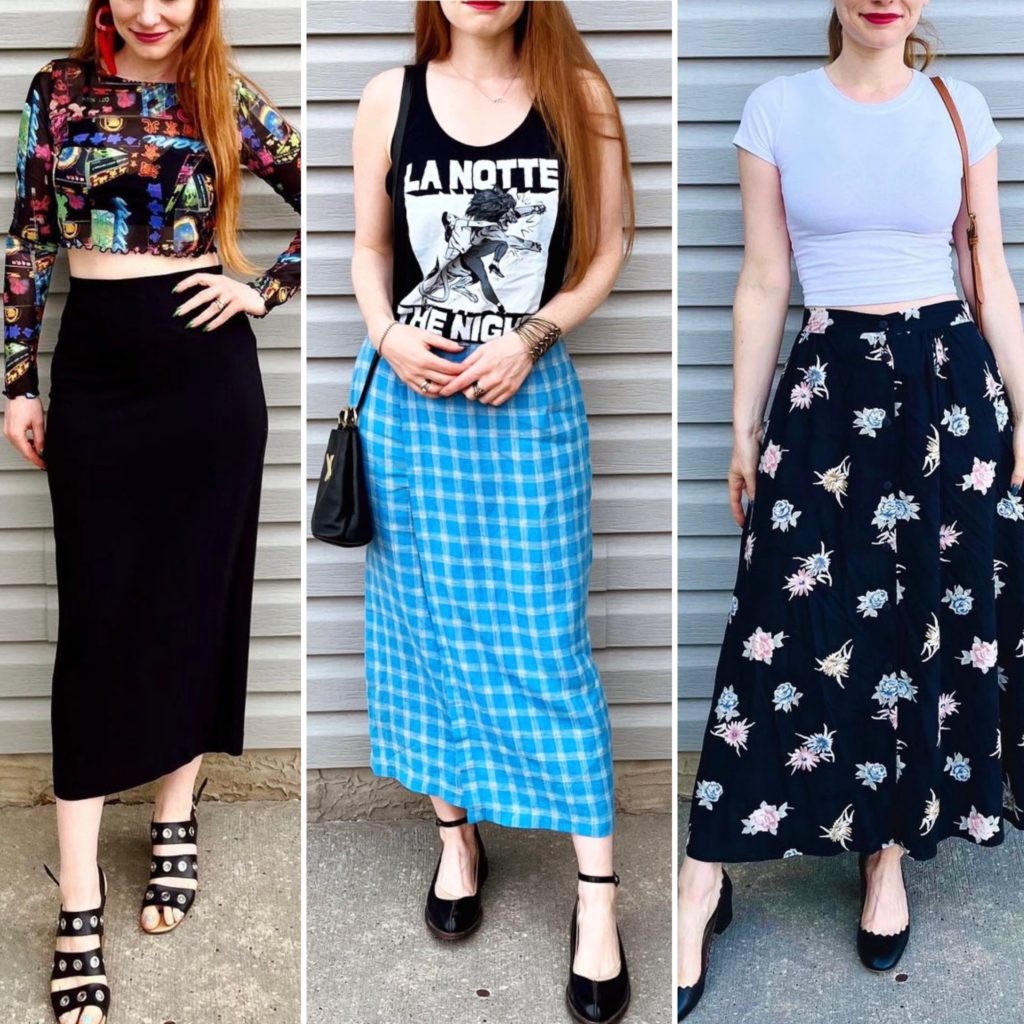
Towards the end of the summer, this theme really kicked in and, as I wrote in an earlier post, will be the touchstone of my updated Artist avatar. I am still working through the elements of that — silhouettes, outfit combinations, prints and colours, etc. — so the outfits here are only a small sample of what is to come. But 90s maxi skirts (long tubular skirts, wrap skirts, and/or dark florals) along with baby tees and graphic tees are sure to feature prominently.

